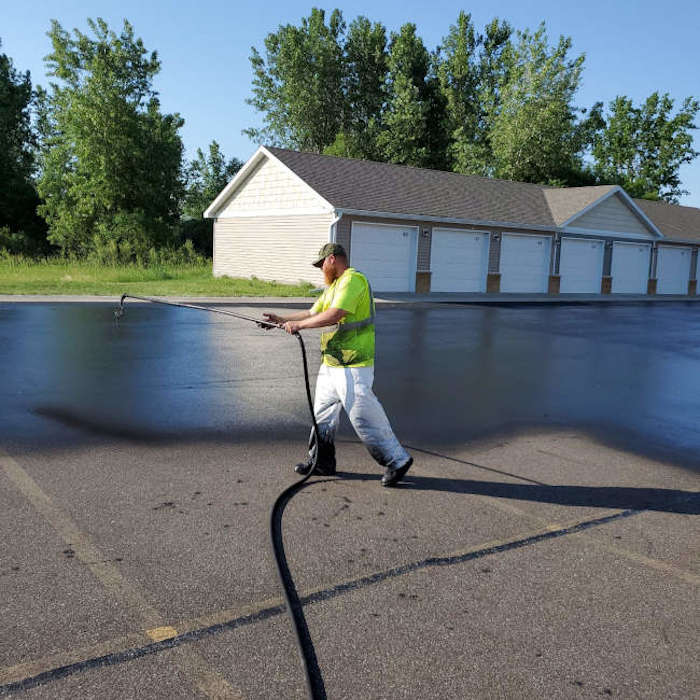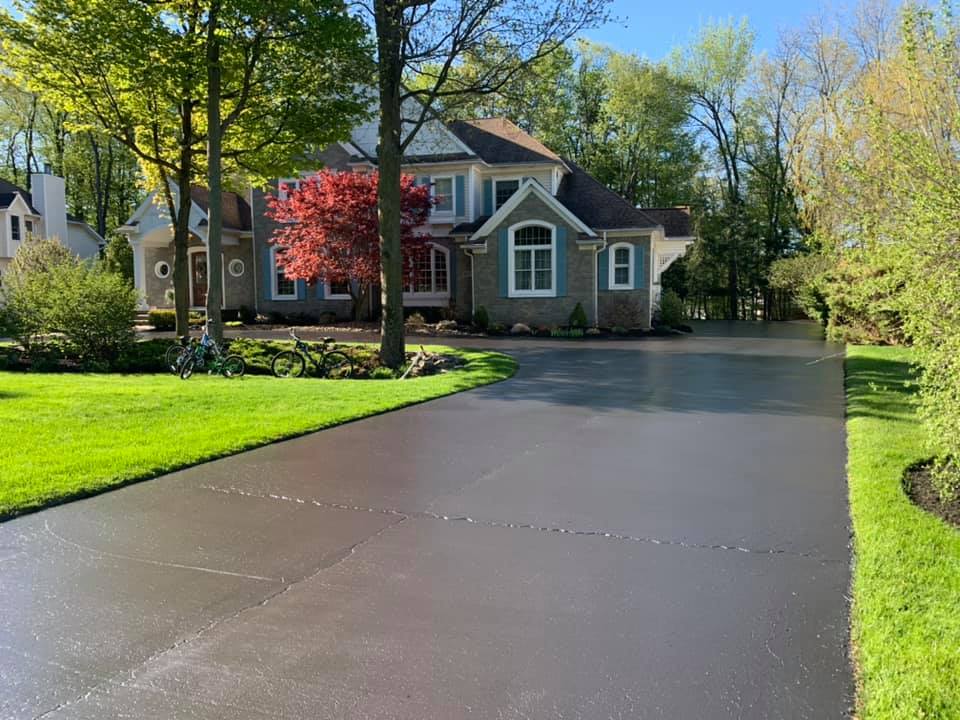Unlock the Keys of Asphalt Sealing: Optimizing Warm Mix Asphalt Longevity
Unlock the Keys of Asphalt Sealing: Optimizing Warm Mix Asphalt Longevity
Blog Article
Hot Mix Asphalt: A Lasting Option for Pavement
Hot Mix Asphalt (HMA) has arised as a leading sustainable choice for pavement remedies, offering a myriad of cutting-edge technologies and environmental benefits. Its ability to recycle products and decrease energy usage presents a compelling instance for its adoption in road building projects. Moreover, the lasting efficiency and durability of HMA make it a preferred alternative for facilities advancement. As the need for environment-friendly building methods expands, checking out the subtleties of HMA's sustainability can provide useful understandings into the future of pavement remedies.
Environmental Advantages of Hot Mix Asphalt

Moreover, Warm Mix Asphalt assists to mitigate metropolitan warmth island results. Its dark shade takes in sunlight, decreasing the amount of warm mirrored back right into the environment contrasted to lighter-colored pavements. This can reduce ambient temperature levels in urban locations, lowering the need for a/c and eventually decreasing power intake.
Furthermore, Warm Mix Asphalt adds to enhanced stormwater administration. Its porous nature enables water to infiltrate the pavement and recharge groundwater supplies, decreasing overflow and the threat of flooding. These environmental benefits make Hot Mix Asphalt a sustainable choice for paving freeways and roadways.
Power Performance in HMA Manufacturing
Is energy performance an important variable in the manufacturing of Hot Mix Asphalt (HMA)? Energy plays a significant function in the production of HMA, impacting both price and environmental sustainability. One crucial facet of power efficiency in HMA manufacturing is the usage of cozy mix asphalt (WMA) modern technologies.
Furthermore, innovations in plant innovations have led to more energy-efficient HMA manufacturing processes. By optimizing energy usage in HMA manufacturing, the market can reduce its carbon footprint while maintaining top notch sidewalk materials.
Recyclability of Hot Mix Asphalt
The recyclability of Hot Mix Asphalt (HMA) is an essential aspect of its sustainability and long-lasting ecological effect. HMA is among one of the most recycled materials in the United States, with over 100 million lots of redeemed asphalt pavement (RAP) being reused each year in new pavement building. Reusing HMA supplies numerous ecological benefits, such as reducing the demand for virgin products, reducing energy intake during production, and decreasing the amount of waste sent to land fills.
The process of recycling HMA includes crushing the existing sidewalk, squashing it right into smaller pieces, and blending it with new accumulation and asphalt binder to develop a recycled mix. Generally, the recyclability of HMA plays a considerable role in advertising lasting practices within the pavement market.

Long-Term Performance of HMA
Asphalt sidewalks show longevity and resilience over a prolonged duration, reflecting the lasting performance of Warm Mix Asphalt (HMA) The long life of HMA can be credited to its capability to stand up to rush hour tons, harsh climate condition, and the results of aging. Studies have shown that well-designed and effectively built HMA pavements can last for twenty years or even more with routine upkeep. The key to maximizing the lasting performance of HMA depends on making use of high-grade products, complying with ideal techniques in building and construction, and applying effective maintenance strategies. Proper drain, regular evaluations, and prompt repair work are vital for protecting the architectural stability of HMA pavements in time. In addition, advancements in HMA technology, such as using polymer-modified binders and cozy mix asphalt, have better boosted the resilience and long life of HMA pavements. By prioritizing high quality construction and upkeep methods, HMA proceeds to show itself as a sustainable and cost-efficient Visit Website remedy for lasting sidewalk facilities.

HMA: Toughness and Sustainability
Showing both longevity and sustainability, Hot Mix Asphalt (HMA) has actually come to be a foundation in the construction of resilient pavement facilities - commercial parking lot paving. HMA's resilience comes from its capacity to hold up against heavy loads, harsh weather condition problems, and high web traffic volumes, making it a reliable selection for roadways, freeways, and airport terminal runways. The structure of HMA, which typically includes accumulations, binder, and filler, plays an important duty in enhancing its durability and resistance to tear and use
Additionally, HMA's sustainability depends on its recyclability and energy-efficient manufacturing process. The ability to recycle redeemed asphalt sidewalk (RAP) in brand-new HMA combinations decreases the demand for virgin products and minimizes the ecological effect of pavement building and construction and maintenance. In addition, the power efficiency of creating HMA hinges on its reduced mixing temperatures compared to other sidewalk products, resulting in minimized power consumption and greenhouse gas emissions.
Final Thought
In conclusion, warm mix asphalt (HMA) offers a sustainable solution for pavement with its eco-friendly characteristics. HMA's recyclability, energy efficiency in production, and long-lasting longevity make it an eco-friendly selection for road building. By saving all-natural sources, minimizing waste, and decreasing greenhouse gas exhausts, HMA plays a vital role in advertising sustainability in facilities development. Its capability to reduce city warmth island results additionally emphasizes its relevance in producing eco mindful and resilient pavement systems.
HMA is one of the most recycled products in the United States, with check over here over 100 million heaps of reclaimed asphalt sidewalk (RAP) being reused each year in new sidewalk construction.The process of reusing HMA involves crushing the existing pavement, crushing it right into smaller sized items, and mixing it with brand-new aggregate and asphalt binder to develop a recycled mix.Asphalt pavements show durability and strength over an extended duration, showing the lasting performance of Warm Mix Asphalt (HMA) Additionally, innovations in HMA innovation, such as the usage of polymer-modified binders and warm mix asphalt, have additionally improved the durability and long life of HMA pavements. The capability to reuse reclaimed asphalt pavement (RAP) in brand-new HMA mixtures minimizes the need for virgin materials read more and decreases the ecological impact of pavement construction and maintenance.
Report this page